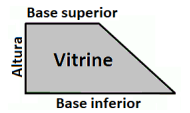Questões de Concurso
Para prefeitura de orlândia - sp
Foram encontradas 786 questões
Resolva questões gratuitamente!
Junte-se a mais de 4 milhões de concurseiros!
Países da América Latina e do Caribe pediram mais financiamento internacional na região após crises econômicas e climáticas, numa declaração final após cúpula realizada na capital argentina, Buenos Aires. “Enfatizamos a necessidade de instituições financeiras regionais internacionais, como os Bancos Multilaterais de Desenvolvimento, melhorarem os instrumentos de crédito através de mecanismos limpos, justos, transparentes e acessíveis”, disse o documento. A “Declaração de Buenos Aires” na sétima Cúpula da Comunidade de Estados Latino-Americanos e Caribenhos (CELAC), com 111 pontos, descreveu como os efeitos da Covid-19, as mudanças climáticas e a guerra na Ucrânia afetaram toda a região.
(Disponível em: https://www.cnnbrasil.com.br/business/america-latina-ecaribe-pedem-financiamento-internacional-na-cupula-da-celac/. Acesso em: 26/01/2023.)
Sobre a Cúpula da Comunidade de Estados Latino-Americanos e Caribenhos (CELAC), assinale a afirmativa INCORRETA.
(José Miguel Barros Caldas de Almeida. Universidade Nova de Lisboa. Acesso em: março de 2023.)
Saúde mental está relacionada à forma como uma pessoa reage às exigências, desafios e mudanças da vida e ao modo como harmoniza suas ideias e emoções. Diariamente, vivenciamos uma série de emoções, boas ou ruins que fazem parte da vida. Sobre fatores que influenciam na saúde mental, analise as alternativas a seguir.
I. Atrasos. II. Incapacidades. III. Falta de família ou excesso de família. IV. Doenças.
Está correto o que se afirma em
(Disponível em: www.saopaulo.sp.gov.br. Acesso em: 28/02/2023.)
São consideradas características da economia do estado de São Paulo, EXCETO:
(Disponível em: www.paho.org. Acesso em: 26/01/2023.)
Analise as afirmativas; marque C para as corretas e E para as erradas.
( ) Considera-se estupro constranger alguém, mediante violência ou grave ameaça, a ter conjunção carnal ou a praticar ou permitir que com ele se pratique outro ato libidinoso. ( ) Um dos fatores associados ao aumento do risco de ser vítima de parceiros e de violência sexual são: nível elevado de escolaridade, exposição à violência entre os pais, abuso durante a infância, atitudes que permitem a violência excluindo a desigualdade de gênero. ( ) Em sociedades de alta renda os programas escolares podem ser eficientes na prevenção da violência em relacionamento entre os jovens.
A sequência está correta em
“Daqui a três anos, minha idade será o décuplo da soma das raízes da função f(x) = 25x² – 80x + 60”.
De acordo com a charada, qual é a idade da professora Marcelina?

Com base nessa situação, qual é o perímetro dessa vitrine?
2, 5, 15, 18, 54, 57, 171, 174, Y, 525
Com base no padrão lógico da sequência, qual o valor de da soma dos algarismos de Y?